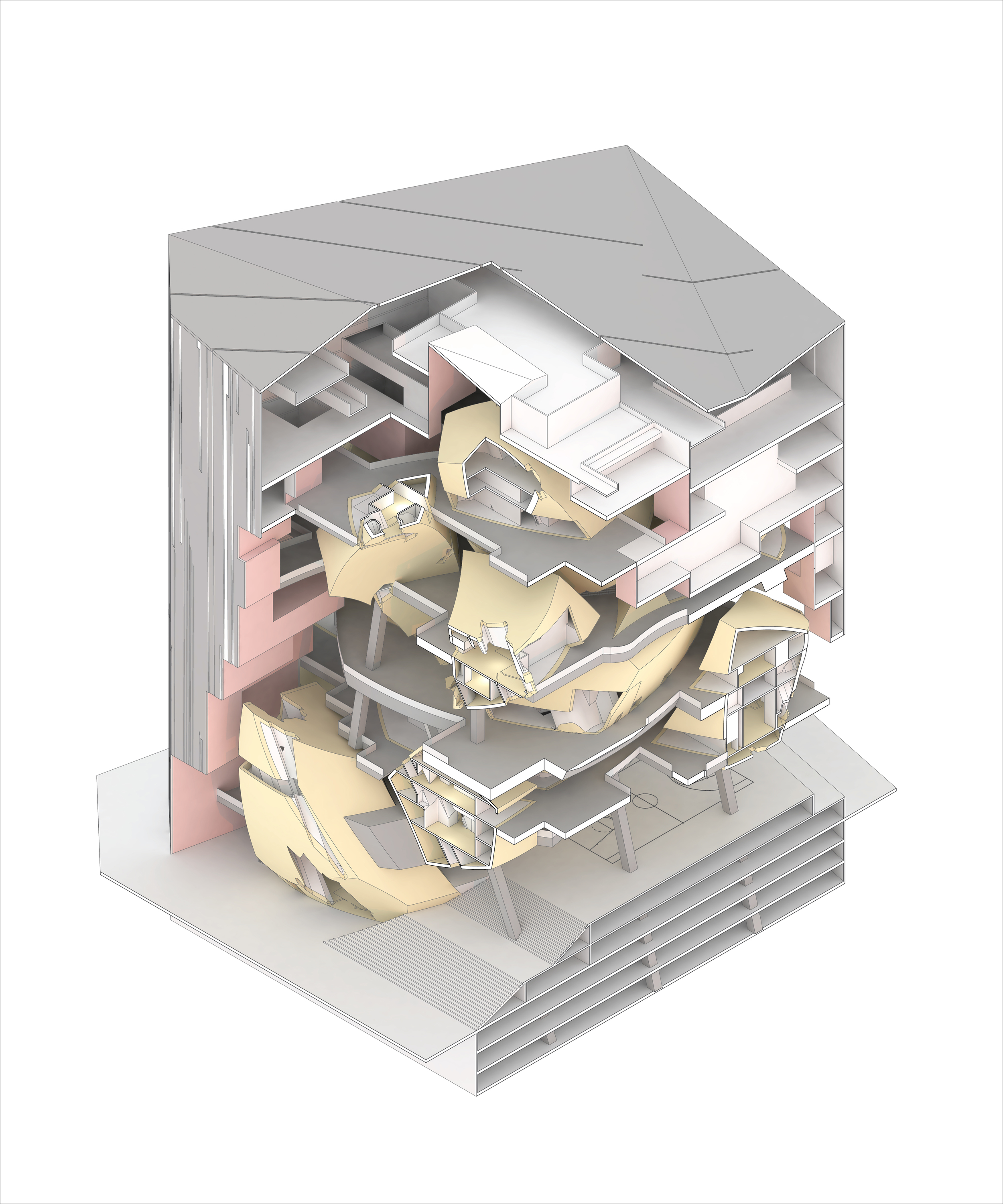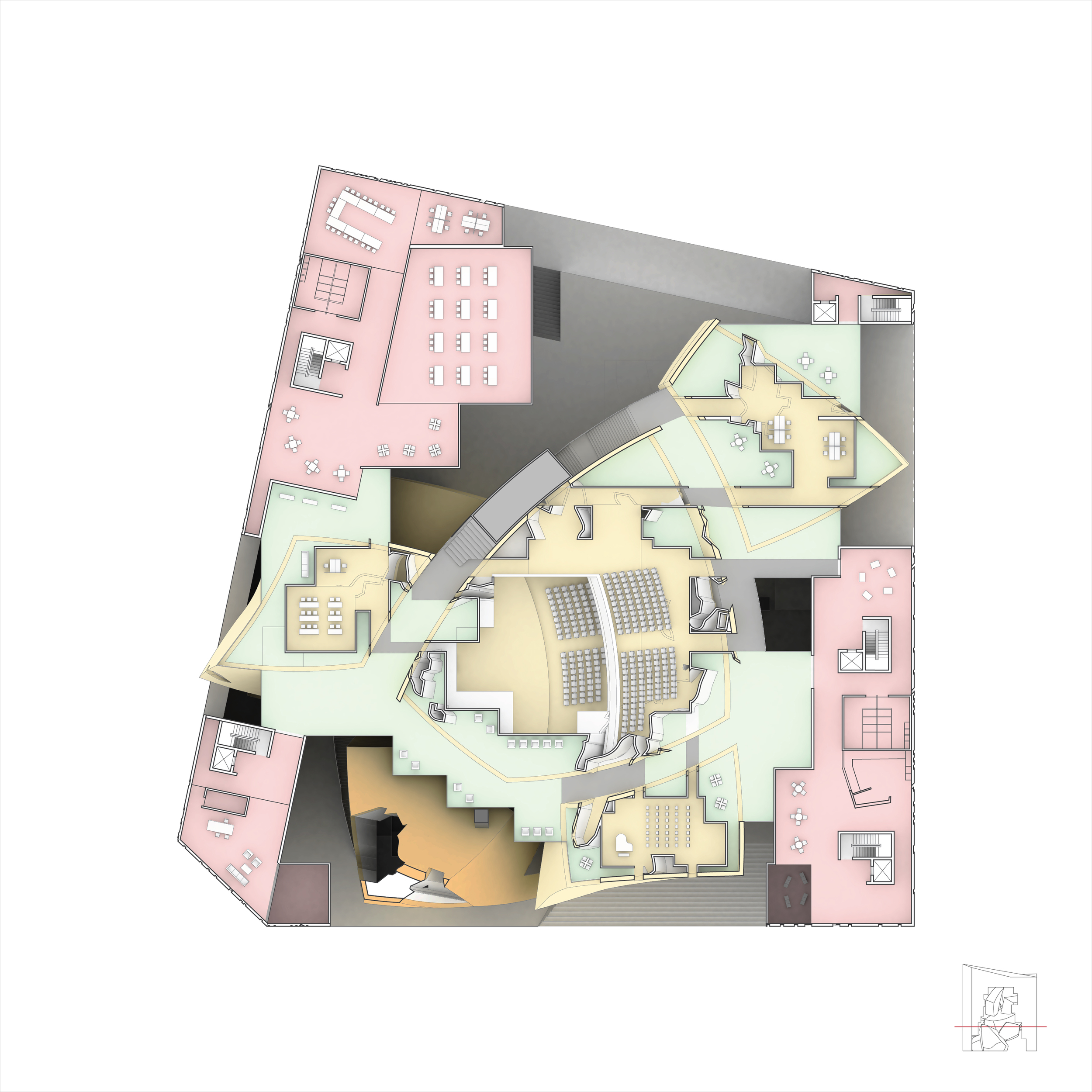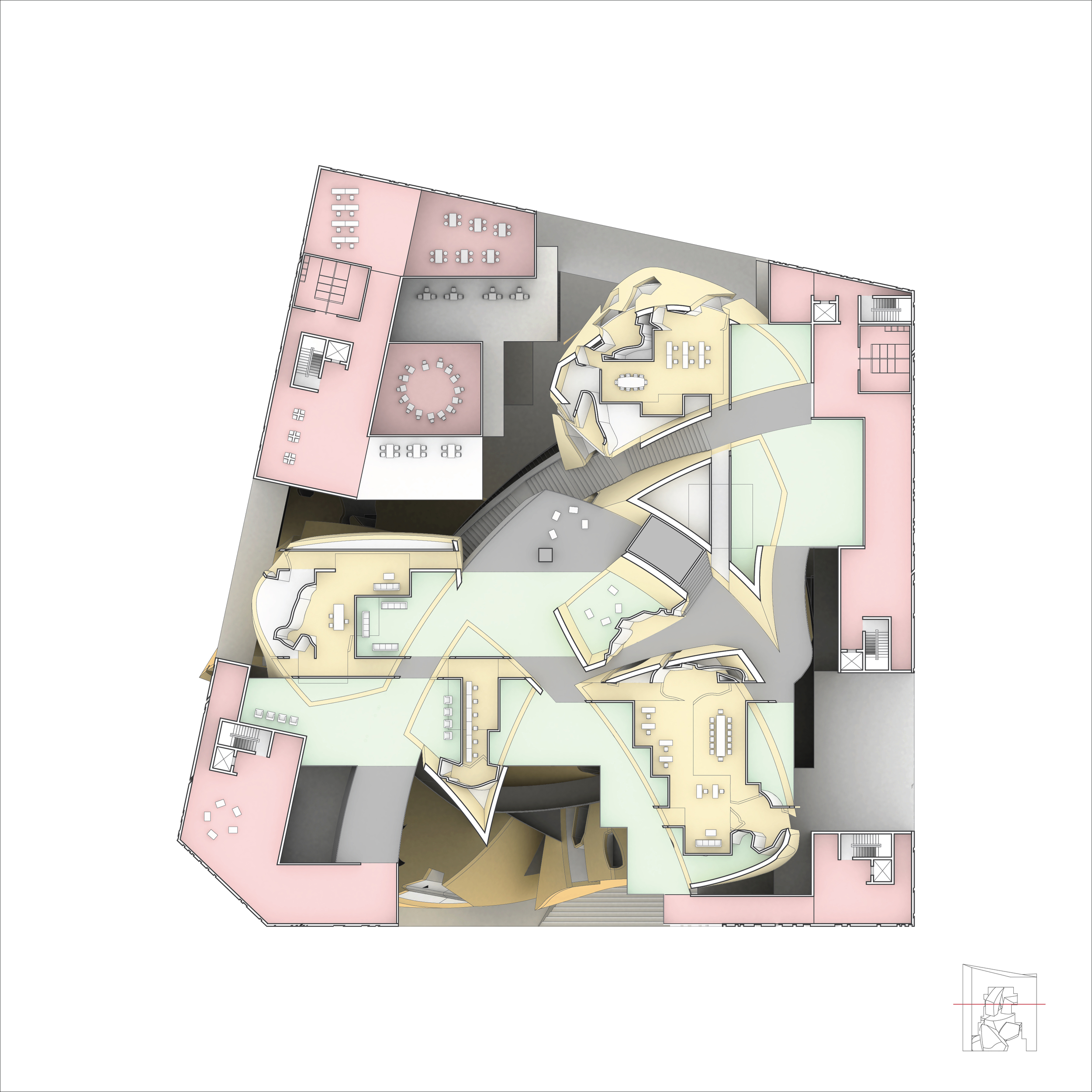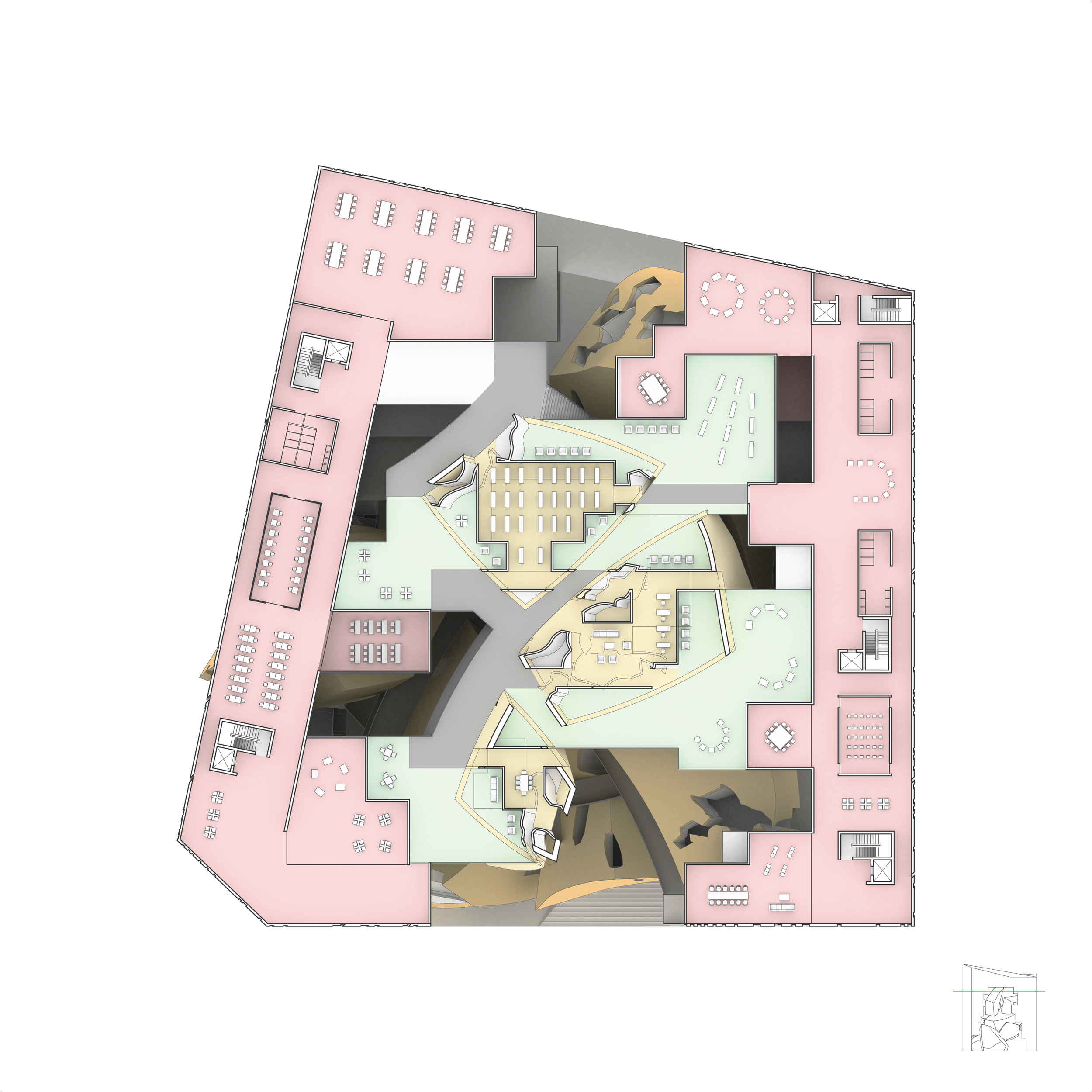Pochéism: Seeing Unseen
En Cheng Sheng
Southern California Institute of Architecture (SCI-Arc)
SCI-Arc Graduate Thesis Fall 2015
Advisor: Eric Owen Moss
Click and hold to rotate model. Click the comment icon to begin a guided tour.
Poché fulfills materials such as stones and clays. Contemporary architects present the literal poché as a solid area, filling the structure with function in section, and focus on the figure ground to distinguish the inside and the outside. However, to reveal the relationship between hidden spaces and approach to the visible and the invisible of poché, the section drawing would be a way to differentiate the exterior to the interior surfaces. Pochés given physical meaning forms, rather than simply serves, as the solid area in architectural drawing. As we take Cluny monastery as an example, it makes poché evident for perception. The perimeter of Cluny forms the boundary of programmatic functions, creating a physical relationship of forms.
Click and hold to rotate model. Click the comment icon to begin a guided tour.
Click and hold to rotate model. Click the comment icon to begin a guided tour.
This approach does not represent the historical monastery in today’s city. Instead, it displays the conceptual poché as the “unseen” and becomes the perceptual poché as the “seen,” achieving mutual shapes of the exterior and the interior. Individual objects, which remain enclosed, keep the distance between each other in order to demonstrate outside of the inside objects and inside of the outside mass as poché. By applying pixels figuration to each individual objects, the outer boundary of the interior are shaped, creating layers of interiority that each has different characteristics. Then, through architectural excavation, the unseen poché between spaces can be perceived.
“We fix our eyes not on what is seen, but on what is unseen.” –2 Corinthians 4:18




-01.jpg)
-01.jpg)
-01.jpg)
-01.jpg)
